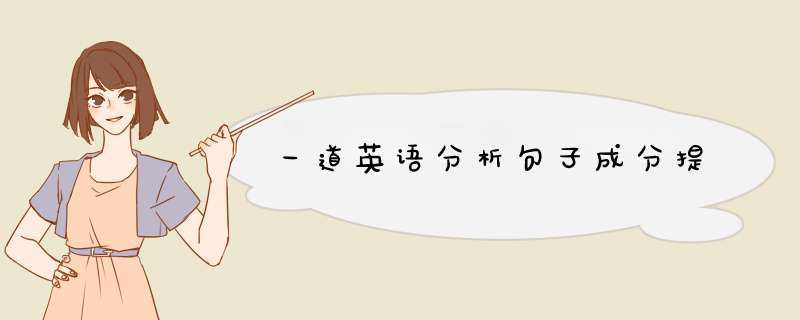
the rules of the school?是宾语,介词宾语用法归纳
在通常情况下,介词必须有自己的宾语。能充当介词宾语的成分很多。如:
1 名词或代词作介词宾语。如:
He never goes out at night 他晚上从不出去。
Don’t hide behind others 不要躲在别人后面。
The town is beside the sea 城镇坐落在海边。
注意:若是人称代词用作介词宾语,要注意用宾格。如:
He got there before me 他比我先到那儿。(不能用 before I)
2 动名词(短语)作介词宾语。如:
She is quick at learning languages 她学语言学得很快。
He makes a living by teaching 他以教书为生。
In crossing the street he was run over 他在穿过马路时被汽车撞倒。
3 从句作介词宾语。如:
He was surprised at what she said 听到她说的话,他很吃惊。
He began to think about what he would do 他开始考虑他该怎么办。
注意:介词后通常不接that从句,但表示“除外”的介词except 是例外。如:
I know nothing about him except that he is from Paris 我只知道他是来自巴黎,其他的就不知道了。
另外,介词后也不接 if 从句作宾语,遇此情况可用 whether。如:
We are worried about whether he will come 我们担心他是否会来。
4 不定式(短语)作介词宾语。如(from ):
He never did anything but watch TV 除了看电视,他从不干任何事。
It had no effect except to make him angry 除惹他生气外,没产生任何效果。
注意:在通常情况下,介词后接动词应用动名词,不用不定式,但是表示“除外”的介词 except 和 but 是例外,它们的后面接动词时,通常不用动名词,而用不定式。该不定式有时带 to,有时不带 to,情形比较复杂,大致原则是:其前有do,不定式不带to;其前没有do,不定式通常带to。
另外,介词后虽然通常不直接跟不定式作宾语,但却可接“连接代词(副词)+不定式”结构。如:
I bought a book on how to repair cars 我买了一本关于如何修理汽车的书。
5 副词作介词宾语。如:
I can’t stay for long 我不能久呆。
It’s too hot in here 这里面太热了。
I looked everywhere except there 除了那儿,我到处都看过了。
副词用作介词宾语的情况并不常见,通常只限于某些表示时间和地点的副词,而且不同的副词有不同的搭配特点,如可说in here,但不能说come to here。
6 数词作介词宾语。如:
I get up at six 我6点起床(from wwwzkenglishcom)。
He was among the first to arrive 他是第一批到的。
7 介词短语作介词宾语。如:
Choose a book from among these 从这些书中选一本吧。
Suddenly he came out from behind the door 他突然从门后出来。
说明:通常可后接介词短语作宾语的介词有 from, till, until, since, except, instead of 等。
1The farm covered thousands of acres
主语the farm , 谓语covered, 宾语 thousands of acres
2Don't leave the water running all the time
否定结构的祈使句
3The place is worth to be visited
主语The place,谓语is,动词不定式to be visited作宾语
4Only then did I realiza I was wrong
only在句首的倒装句
5The rest of the apple is rotten
主语The rest of the apple,谓语is,宾语rotten
6I choose to go to work by bus
主语I,谓语choose,动词不定式to go to work by bus作宾语
7There are plenty of restaurants to choose from
主语There,谓语are,宾语 plenty of restaurants,动词不定式to choose from作补语
8I met her by chance
主语I,谓语met, 宾语her, 状语by chance
9I came across an old photo in the drawer
主语I, 谓语came across, 宾语an old photo, 地点状语in the drawer
10The child tried to catch the teacher's eye
主语The child,谓语tried, 动词不定式to catch the teacher's eye作宾语
11I intend to finish the text today
主语I, 谓语intend, 动词不定式to finish the text 作宾语 , 时间状语today
12She looks young considering her age
主语she,谓语looks,状语young, 状语considering her age
13Carry on working while I am away
祈使句。
14To see is to belive
不定式 to see作主语, 谓语is, 不定式 to believe作宾语
15The worker and writer is from Wuhan
主语The worker and writer, 谓语is,状语 from wuhan
16Something has gone wrong with my watch
主语Something,谓语has gone,状语wrong, with my watch状语
17They were struggling to get out of the burning car
主语they,谓语were struggling, 不定式to get out of the burning car作宾语
18She did want to have what is called mobile phone
主语she,谓语did want, 后面不定式是宾语,其中what is called mobile phone是宾语从句
19We think it is necessary to work hard
主语we,谓语think,后面是宾语从句
20Seeking friendship is human nature
动名词主语Seeking friendship,谓语is,宾语human nature
在英文当中,有八大句子成分,分别是:主语、谓语、宾语、表语、定语、补语、同位语、状语。
主语:动词的发出对象
谓语:动词
宾语:动词的承受对象
表语:说明主语的品质、性质、身份、特征和状态,通常在系动词(be/become/feel/sound/turn)后面
定语:用来修饰、描述主语或宾语,形容词通常做定语
补语:用来补充说明主语或宾语
同位语:即“同等位置”,以一个名词来解释说明另外一个名词或代词。
状语:表示时间、地点、原因、目的、结果、方式、程度等,副词通常做状语。
扩展资料:
举例:
1、 My sister Susan sings very well
我的妹妹苏珊唱歌很棒。
My—定语
sister—主语
Susan—同位语
sings—谓语
very well—状语
2、She is Chinese
她是中国人。
She—主语
is—be动词
Chinese—表语
3、I painted the wall white
我把墙漆成白色的。
I—主语
painted—谓语
the wall—宾语
white—补语
欢迎分享,转载请注明来源:品搜搜测评网

 微信扫一扫
微信扫一扫
 支付宝扫一扫
支付宝扫一扫
